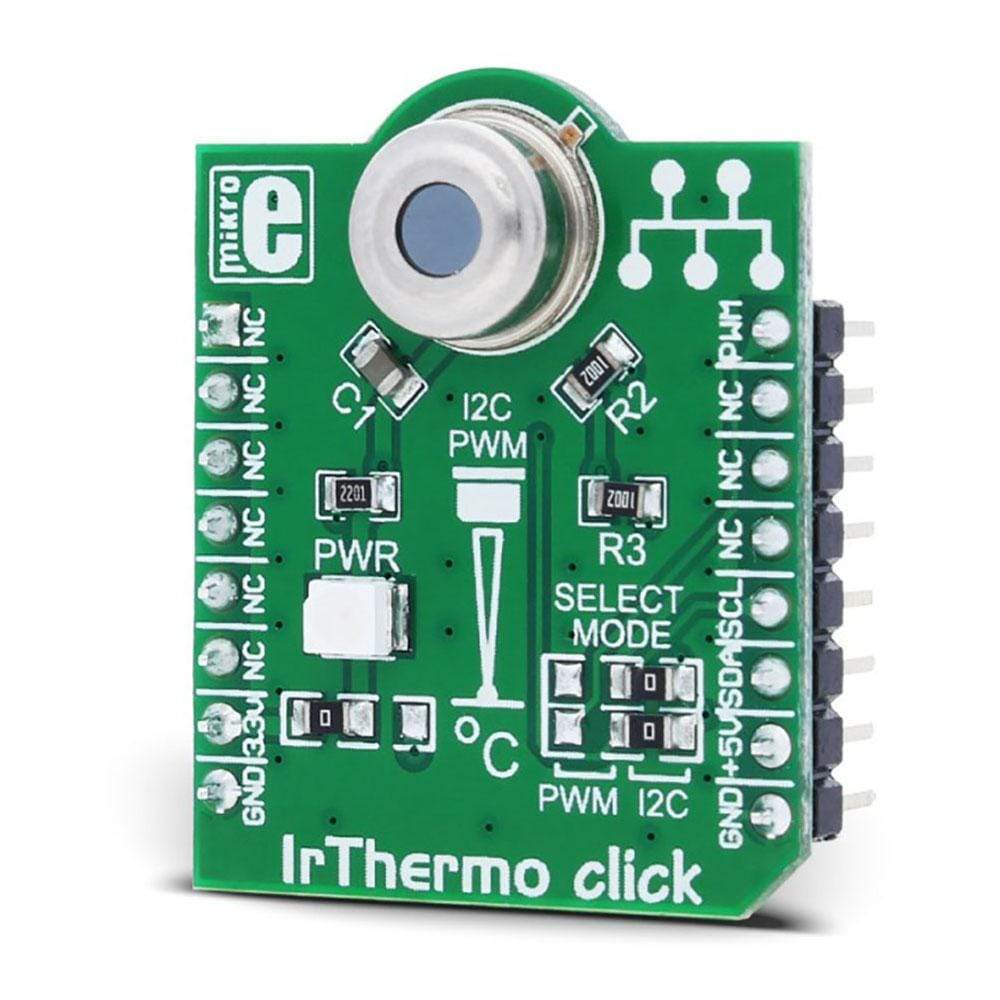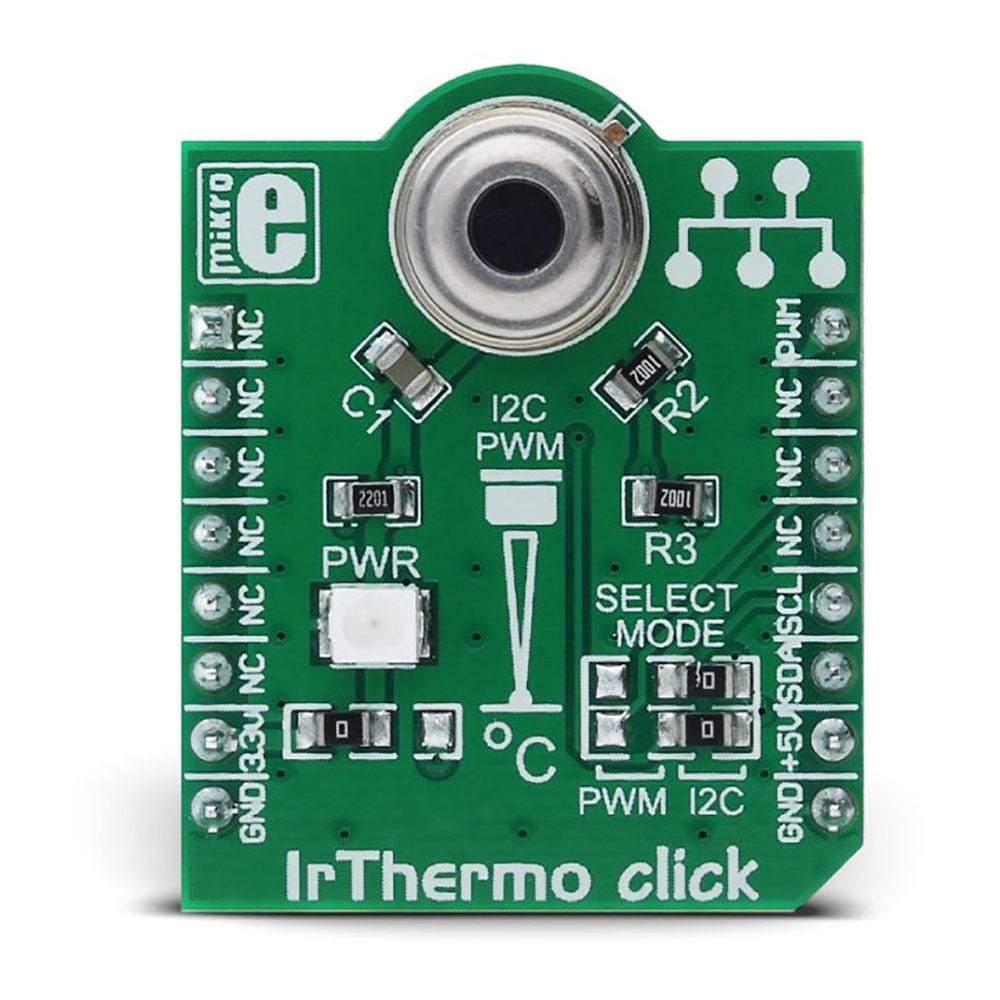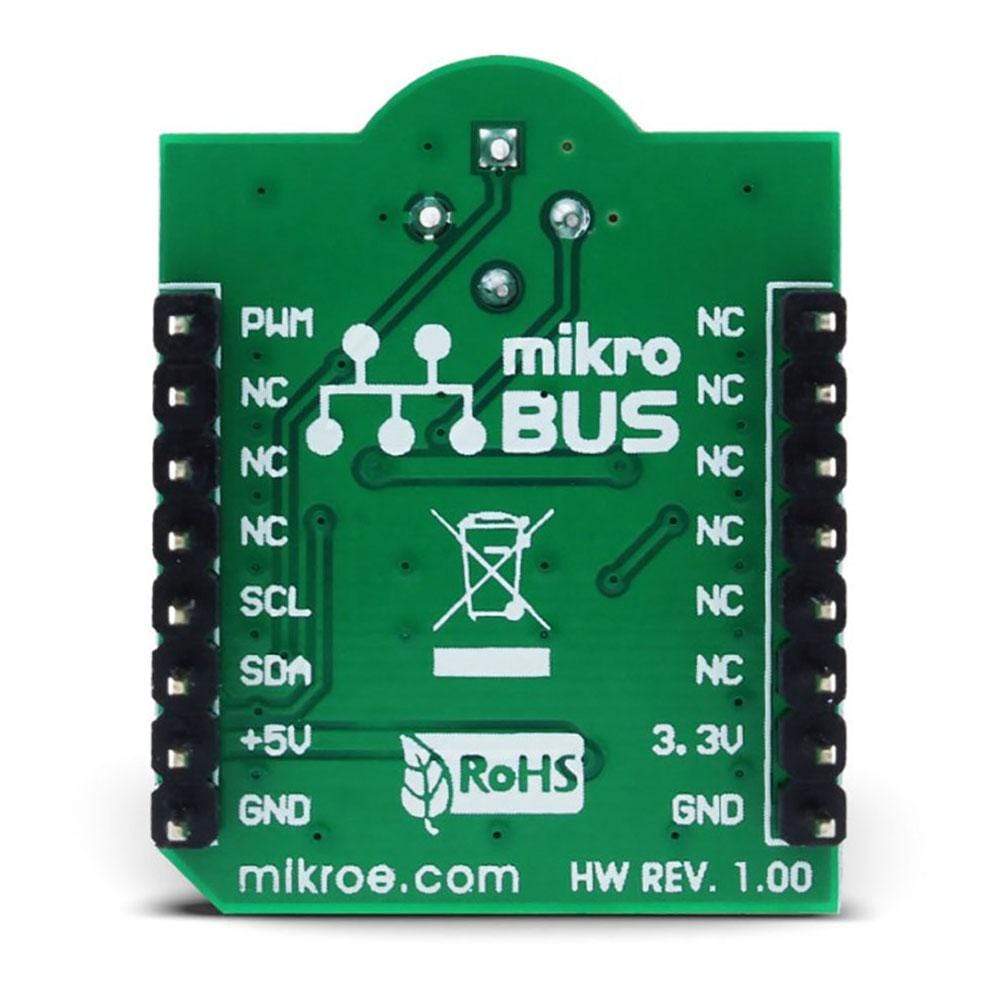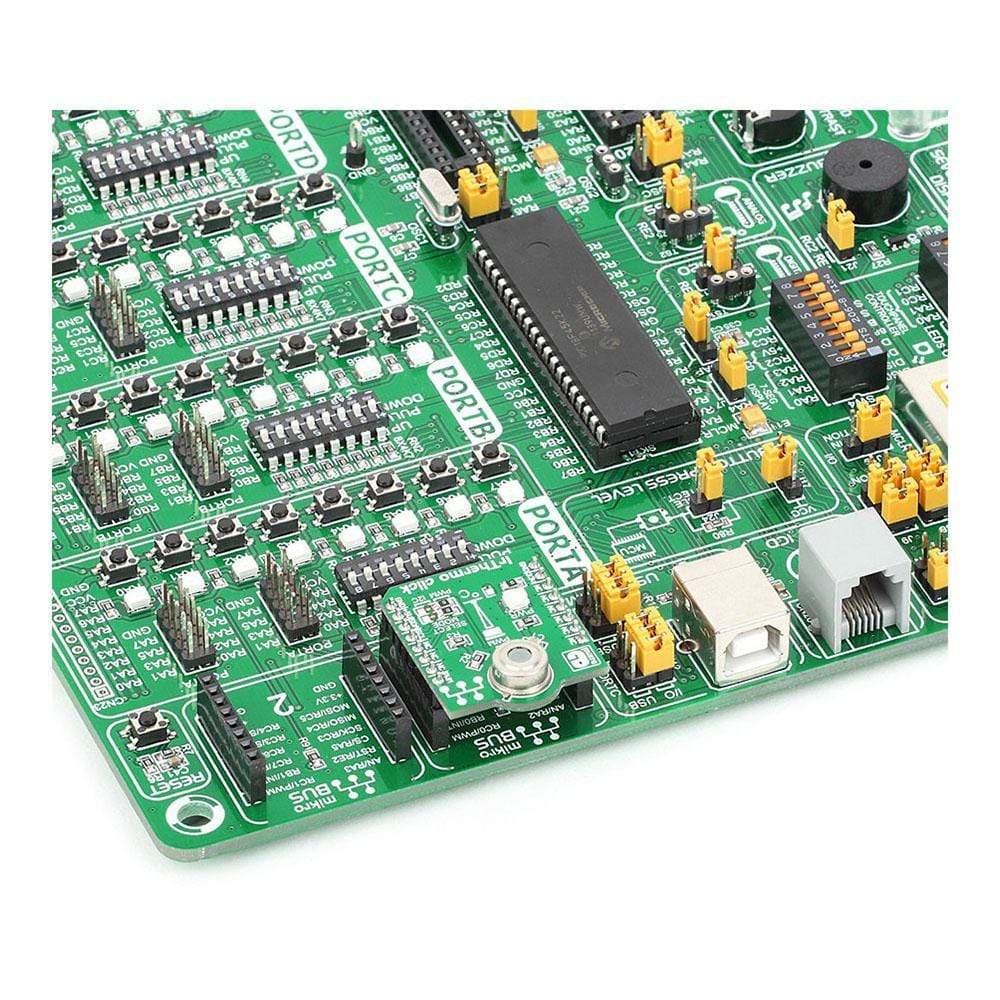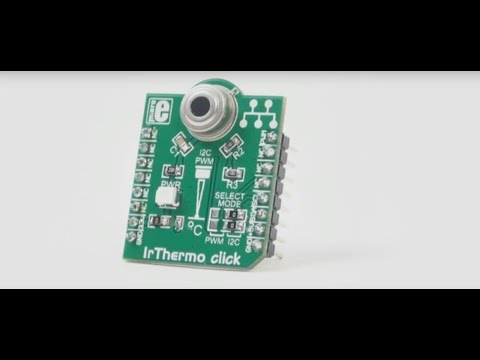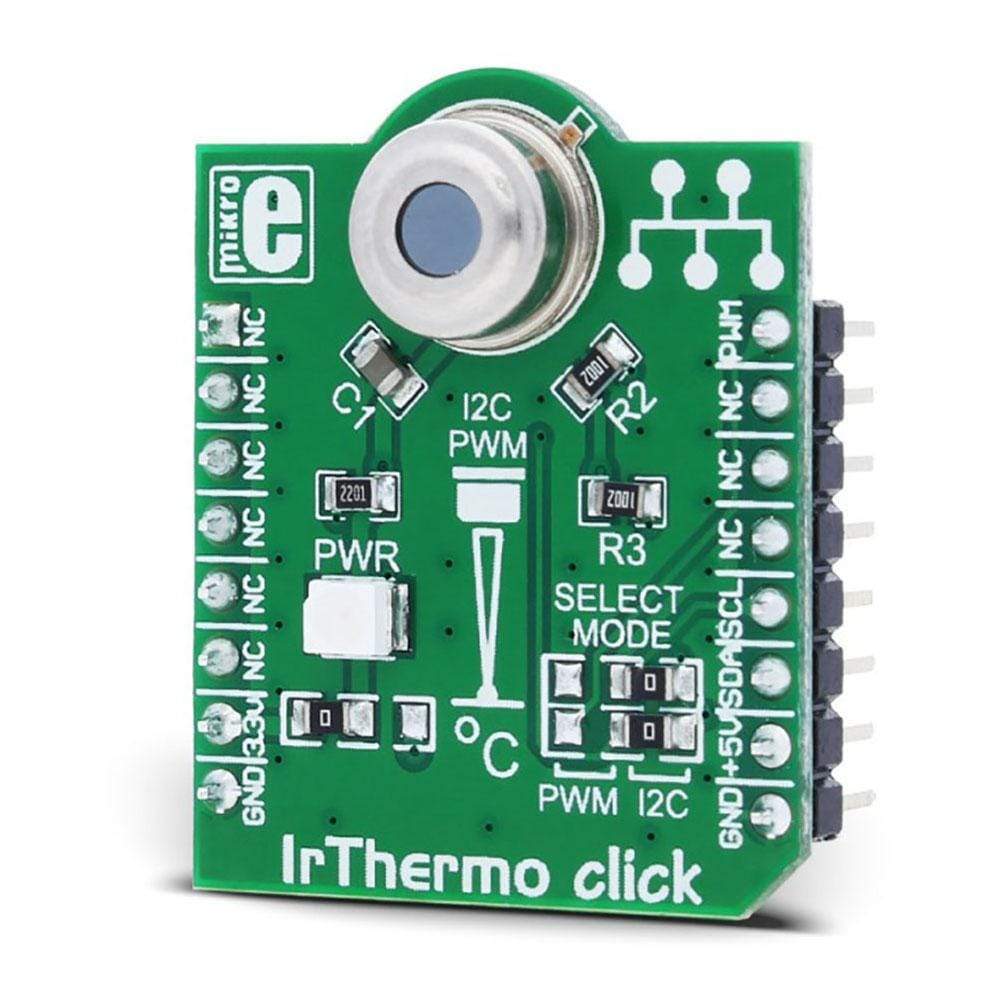

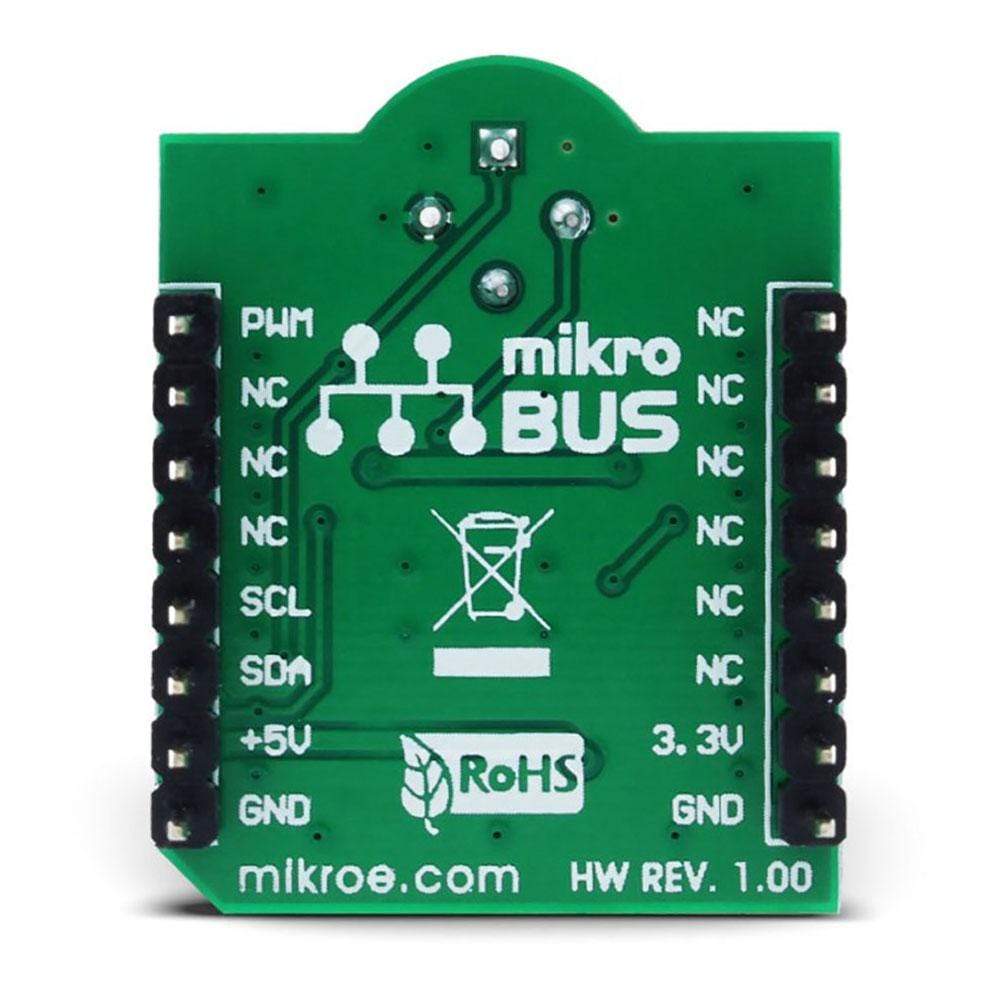
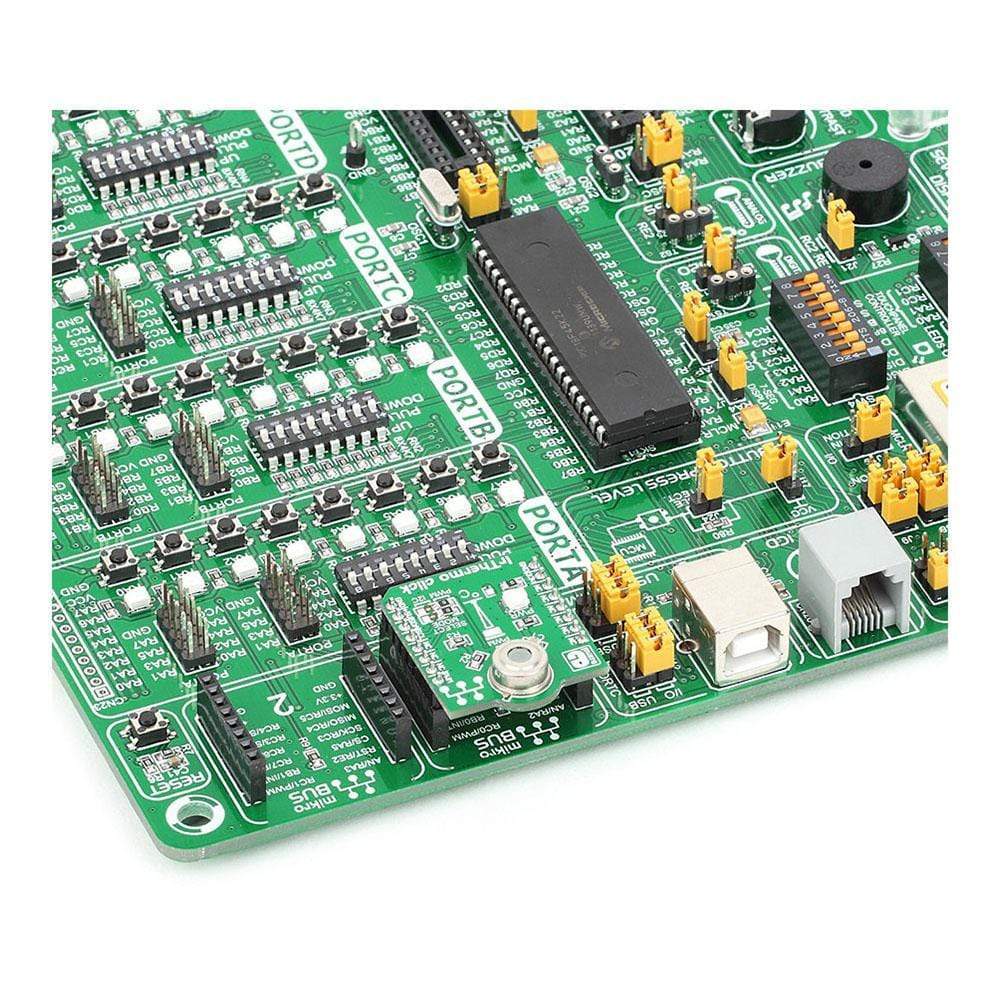
Overview
Introduce Infrared (Ir) Thermometer to the user design with the IrThermo Click Board™. This add-on board offers a compact and easy solution for non-contact temperature measurements. This 3.3V version of the IrThermo Click Board™ features a Melexis MLX90614ESF-BAA single-zone infrared thermometer module that is configured to determine temperature in the range of -70 to +380 °C with output resolution of 0.014 °C. The MLX9061 module also includes a low noise amplifier, 17-bit ADC, and powerful DSP unit for high accuracy and resolution of the thermometer. For communication with the target board microcontroller, the IrThermo Click Board™ uses the MikroBUS I2C lines (SCL, SDA) and PWM line. The communication interface can be selected by placing SMD jumpers in appropriate positions. It supports a 3.3V power supply only and features a LED diode that denotes the presence of power supply. A 5V version IrThermo Click Board™ is also available.
The IrThermo Click Board™ is an ideal choice for automotive, industrial temperature control, body temperature measurement, movement detection, air conditioning control and many more.
Downloads
Introduisez le thermomètre infrarouge (Ir) dans la conception de l'utilisateur avec l' IrThermo Click Board™ . Cette carte complémentaire offre une solution compacte et simple pour les mesures de température sans contact. Cette version 3,3 V de l' IrThermo Click Board™ comprend un module de thermomètre infrarouge à zone unique Melexis MLX90614ESF-BAA configuré pour déterminer la température dans la plage de -70 à +380 °C avec une résolution de sortie de 0,014 °C. Le module MLX9061 comprend également un amplificateur à faible bruit, un ADC 17 bits et une puissante unité DSP pour une précision et une résolution élevées du thermomètre. Pour la communication avec le microcontrôleur de la carte cible, l' IrThermo Click Board™ utilise les lignes MikroBUS I2C (SCL, SDA) et la ligne PWM. L'interface de communication peut être sélectionnée en plaçant des cavaliers SMD dans des positions appropriées. Il prend en charge une alimentation 3,3 V uniquement et dispose d'une diode LED qui indique la présence d'une alimentation. Une version 5V IrThermo Click Board™ est également disponible.
L' IrThermo Click Board™ est un choix idéal pour le contrôle de la température automobile et industrielle, la mesure de la température corporelle, la détection de mouvement, le contrôle de la climatisation et bien d'autres encore.
| General Information | |
|---|---|
Part Number (SKU) |
MIKROE-1361
|
Manufacturer |
|
| Physical and Mechanical | |
Weight |
0.03 kg
|
| Other | |
Country of Origin |
|
HS Code Customs Tariff code
|
|
EAN |
8606015074191
|
Warranty |
|
Frequently Asked Questions
Have a Question?
Be the first to ask a question about this.

